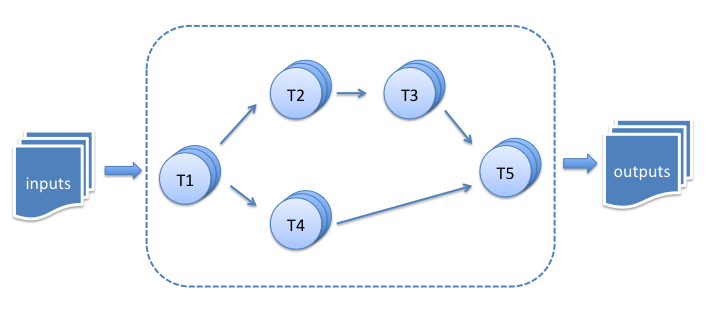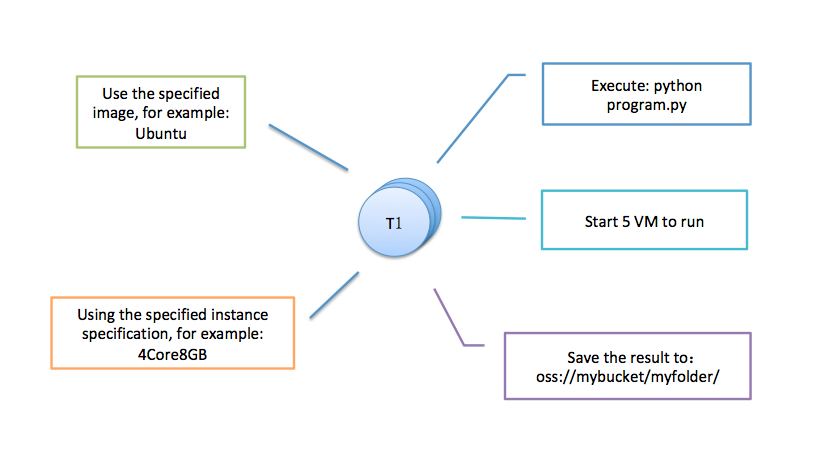You use a tool, such as an SDK or command line tool, to submit jobs to Batch Compute. Then, Batch Compute uses the specified image (such as Ubuntu) to start virtual machines (VMs). These VMs run your programs and are released after the job is completed.
In Batch Compute, OSS can be used for persistent storage. After a program is run, you can save the results data in OSS. In Batch Compute, you can also use file interfaces to access data in OSS.
By default, Batch Compute programs run on VMs, but can also support Docker containers.
Job description
You must submit a job description file in JSON format to Batch Compute. This JSON file gives a detailed description of the programs that are to be run. This file also describes the number of hosts required to run the programs, the specifications of memory and CPU, where the operation log is to be printed, and the results output location.
A single job contains multiple tasks that are performed in the sequence described in the specified DAG.

Each task defines its image, instance type, the program to run, the number of hosts, and the result storage location.

Manage jobs
You can use a tool (the console or command line tool) to view the jobs you have submitted and stop, restart, or delete jobs. You can also view the conditions of each task and the conditions and logs for each instance (VM). The console’s job management interface is shown in the following figure:

Use cluster
VMs must be started before a program is run, which takes a certain amount of time (generally several minutes). In addition, during busy periods, the resources you request may not be available (if the VMs are in use by other customers). Therefore, after submitting a job, you may have to wait some time before it can be run.
If you want to improve your operational efficiency, you can create a cluster before running jobs. To do this, specify the number of VMs you require, for example, five VMs, and your image ID. Then, Batch Compute allocates you the VMs and starts them. These VMs remain in the Running status. Once you have a cluster, your jobs are run as soon as you submit them, improving your efficiency.
Custom images
When you submit a job or create a cluster, you can use an official image provided by Batch Compute or your own custom image. Custom images allow you to install the software you need independently. For more information, click Custom images .